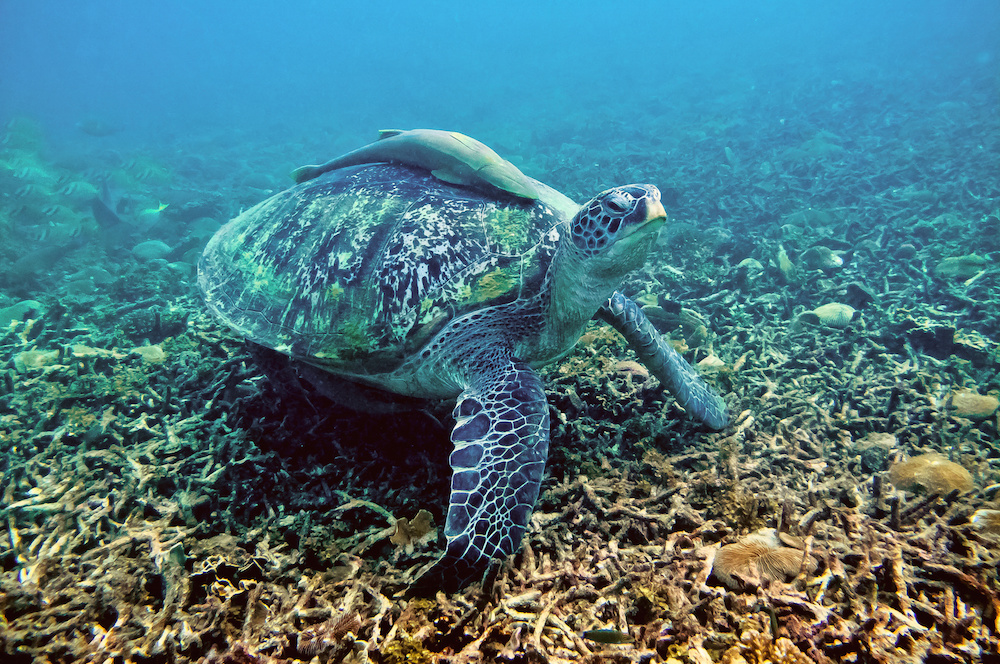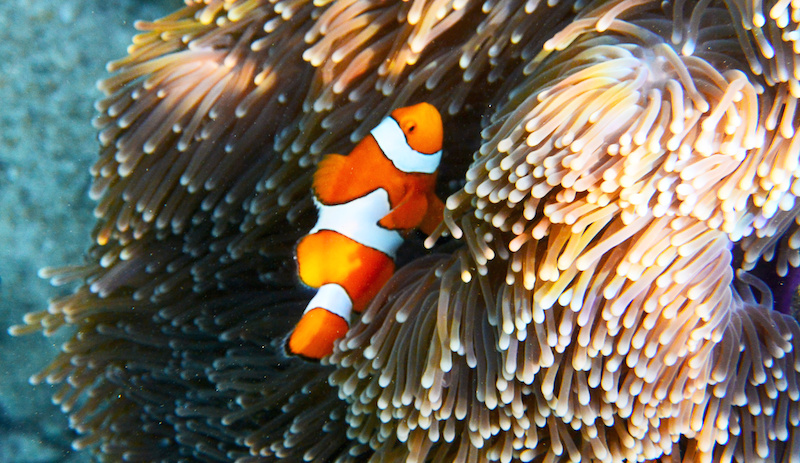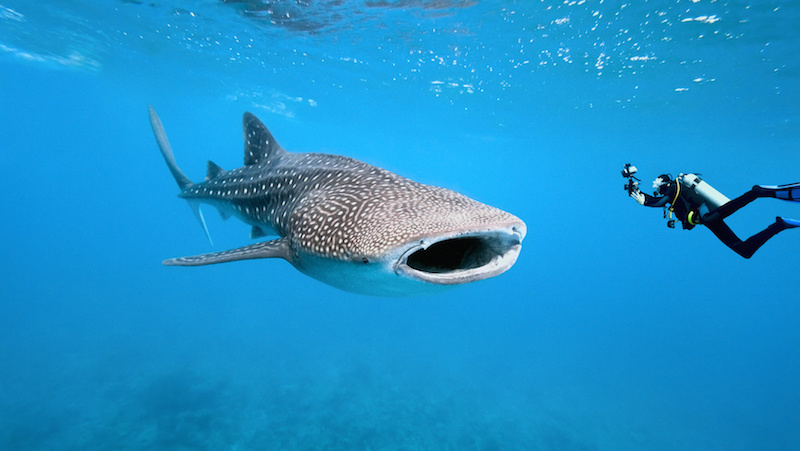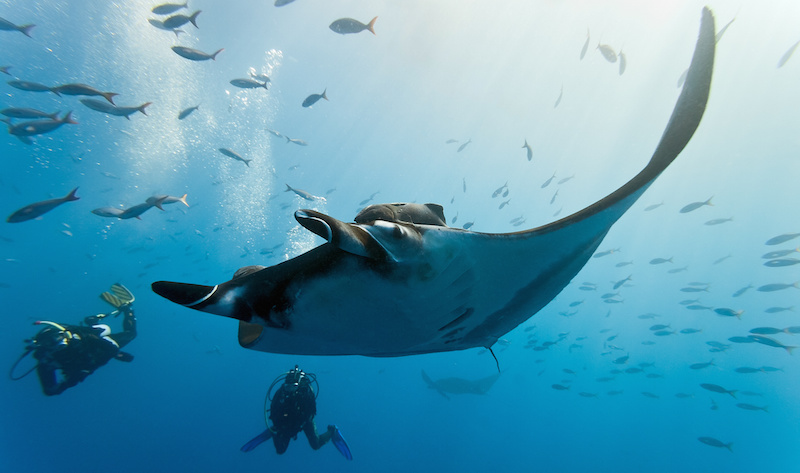A Guide to SCUBA Diving in Thailand
PUBLISHED February 20th, 2016 08:00 am | UPDATED June 2nd, 2020 06:58 pm
Ever since the first dive centres started appearing in the 1980s, the scene for SCUBA diving in Thailand has exploded making it one of the most popular diving destinations in the world.
Scuba Diving in Thailand
SCUBA diving is without a doubt one of the most popular outdoor activities in Thailand and it’s easy to see why! Practically all of the diving in Thailand takes place either in the Andaman Sea on the West Coast or in the Gulf of Thailand on the East Coast. These two bodies of water are host to a huge range of world class dive sites suitable for all levels of diving.

When planning a SCUBA diving vacation in Thailand, it’s best to avoid the monsoon seasons in the respective areas (June to September on the Andaman side and September to December in the Gulf of Thailand). During this time it’s not uncommon for dive trips to be postponed or cancelled; some dive centres even close for part of the rainy season. Thankfully, the different coasts have opposing monsoon seasons which makes diving in Thailand possible all year round.
Best Places to Try Diving or Get Certified
The warm, calm, tropical waters of Thailand are absolutely teeming with a huge range of tropical coral and marine life. The abundance of shallow water dive sites also means that you’ll spend less time in the pool and more time enjoying the underwater world, should you decide to get certified during your next vacation.
Then the backpacker havens of Koh Tao and the Phi Phi islands are two of the best places to try diving or get certified. With so many dive centres on this these small islands, it’s worth having a bit of a look around before deciding on which centre to go with. Entry level certification courses start at 9,000 Thai Baht ($250), which makes Koh Tao and the Phi Phi islands two of the cheapest places on earth for certification. Many centres even offer incentives, such as free accommodation, throughout your course so you’re bound to nab a good deal!
Certified Divers
Already certified? Both the Andaman Sea and the Gulf of Thailand have world class dive sites for exploration, regardless of your dive level. It’s worth doing your research and picking the spots you’d like to dive beforehand. After that, it’s simply a matter of finding out which dive centre’s schedule fits yours best.
Below are some dive sites on both coasts that I highly recommend for consideration when planning your next vacation:
Similan Islands
Just west of Phuket, the Similan Islands National Marine Park is made up of nine small islands, which themselves are home to about 20 world class dive sites suitable for all levels of divers. Given the islands’ national marine park status, they’re a haven for tropical marine life, so there’s definitely no shortage of beautiful fish and coral.
Due to the Marine Park’s distance from the mainland, diving in the Similan Islands is mostly off liveaboards visiting the islands. Liveaboards range from 2 nights to over a week – a perfect getaway for any SCUBA junkie. One thing worth noting is that the Similan Islands National Marine Park is only open to the public from November until May so be sure to plan your vacation accordingly!
Richelieu Rock
First discovered by Jacques Cousteau, Richelieu Rock might not look like anything special from the surface, but once you take the plunge, you’re transported to one of the world’s top dive sites. Reaching a maximum depth of 50 meters, it’s one of the world’s best destinations to dive with whale sharks. The whale sharks are attracted to this particular site to feed on the seasonal plankton blooms which occur between March and April, making this the best time for anyone wishing to dive with these majestic giants.
Koh Tachai
Koh Tachai is a common liveaboard stop on the way to Richelieu Rock. Due to the regular occurrence of strong currents, the sites around Koh Tachai tend to be more suited to experience divers. However, these strong currents tend to attract large marine life such as manta rays. Manta rays are not an uncommon and witnessing one gliding along the reef is truly a sight to behold. Other large marine life to look out for are leopard sharks and hawksbill turtles, both fairly common and a favourite amongst underwater photographers.
Chumphon Pinnacle
A huge granite pinnacle rising to a height of approximately 15 metres above sea level, Chumphon Pinnacle is the farthest dive site accessible from the diving mecca of Koh Tao. Apart from the main pinnacle itself, the site features a number of smaller underwater pinnacles all covered in beautiful hard and soft tropical corals. The site’s depth (up to 35 metres) attracts larger fish common in the area, including goliath groupers, blacktip & greytip sharks, bull sharks and occasionally, even whale sharks. Due to the depth, Chumphon Pinnacle is recommended mainly for experienced divers.
Sail Rock
Without a doubt one of the most famous dive sites in the Gulf of Thailand, Sail Rock rises to approximately 15 metres above sea level and plunges down to a maximum site depth of 35 metres. Dive depths on the site can be varied to suit all dive levels and one of its most famous features is the vertical swim through known as “The Chimney”.
The Chimney can be entered and exited at 6m, 12m, and 18m making it a popular attraction and a great way to end a dive right before your safety stop. Another notable attraction is the “Secret Pinnacle”, just off the main rock and home to a variety of larger fish including goliath groupers and great/chevron barracuda. Bull sharks and manta rays can also be spotted around Sail Rock.
Have you been scuba diving in Thailand? We want to hear about your favourite scuba spots and dive companies. Let us know in the comments.


1 Comment
Comments are closed.